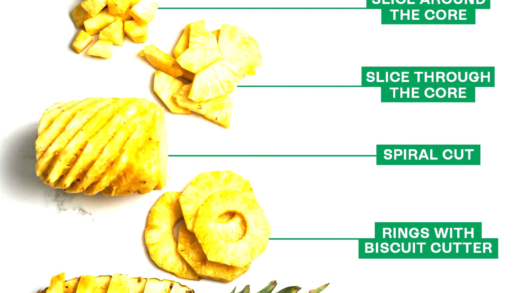This article explores the unique world of slow lorises, detailing their habitats, venomous bites, and fascinating traits. It discusses their ecological importance, defense mechanisms, and the challenges they face, including habitat loss and illegal trade. Understanding these aspects is crucial for their conservation and the protection of this captivating species.
Where to Find Slow Lorises: Discovering Their Natural Habitat
Slow lorises are fascinating creatures that thrive in diverse habitats across Southeast Asia. These nocturnal primates primarily inhabit tropical forests, including rainforests, mangroves, and even some secondary forests. Their range extends from countries such as Indonesia, Malaysia, Thailand, to the Philippines. Understanding their habitat is crucial for their conservation and survival.
1. **Tropical Rainforests**: These lush environments provide slow lorises with ample food sources and cover. The dense foliage offers protection from predators and a perfect setting for their arboreal lifestyle.
2. **Mangrove Forests**: Some slow lorises adapt to coastal areas where mangrove ecosystems flourish. These unique habitats present both challenges and opportunities for the species.
3. **Secondary Forests**: Regrowth areas, where forests have been disturbed, can also support slow loris populations. Although these areas might not be as rich as primary forests, they can still provide essential resources.
Slow lorises require specific conditions to thrive, such as humidity and a variety of flora for feeding. Their diet mainly consists of fruits, tree sap, and insects. The availability of these food sources is vital for their survival.
The Toxic Bite of Slow Lorises: Why is it Toxic?
Slow lorises possess a unique defense mechanism: their toxic bite. This venomous trait sets them apart from many other primates. The toxicity originates from a gland located on their inner elbow, which secretes a substance that mixes with their saliva.
1. **Purpose of Venom**: The venom serves multiple functions. It can deter predators and rivals, ensuring that slow lorises can protect themselves in the wild. When threatened, they can deliver a painful bite that can cause significant harm.
2. **Mechanism of Action**: Upon biting, the venom enters the bloodstream of the victim, potentially leading to adverse reactions. Symptoms can range from pain and swelling to more severe complications, depending on the size and health of the attacker.
3. **Evolutionary Advantage**: This adaptation is a remarkable example of evolution, as it enables slow lorises to survive in environments where they face various threats. Their toxicity is an essential survival tool, ensuring they can fend off potential dangers.
Venom Production: How Do They Produce Venom?
Understanding how slow lorises produce venom reveals the complexity of their biology. The venom is generated from a combination of saliva and secretions from specific glands.
1. **Glandular Secretion**: The venomous substance is produced in the salivary glands, specifically in the region of the elbow. When the slow loris licks this area, the toxins mix with saliva, creating a potent venom.
2. **Licking Process**: The slow loris licks its forearms, transferring the venom to its mouth. This process is crucial as it prepares the venom for delivery during a bite.
3. **Significance of Venom**: The ability to produce venom enhances their defense mechanisms. It provides slow lorises with a means to protect themselves from predators and rivals. This unique adaptation is vital for their survival in the wild.
The Licking Process: Understanding the Significance of Venom Application
Slow lorises utilize their unique venom not just as a defense mechanism but also through a fascinating licking process. When these primates lick their forearms, they mix the toxic secretions from their glands with saliva, preparing it for potential use. This licking is crucial because it ensures that the venom is potent and ready to be delivered during a bite.
1. **Preparation for Defense**: By licking their arms, slow lorises activate the venom, making it more effective against predators or rivals. This preparation is vital for their survival in the wild.
2. **Venom Application**: When threatened, a slow loris will bite its attacker, transferring the venom directly into the bloodstream. This rapid application of venom can incapacitate larger threats, ensuring their safety.
3. **Behavioral Significance**: The licking process also highlights their unique behavioral adaptations. It showcases how slow lorises have evolved to maximize their chances of survival by using their venom strategically.
Effects on Attackers: The Impact of Slow Loris Venom
The venom of slow lorises has significant effects on potential threats, acting as a powerful deterrent. When a slow loris bites, the venom can lead to various symptoms in the attacker, making it an effective defense mechanism.
1. **Immediate Reactions**: The initial effects of the venom may include pain, swelling, and inflammation at the bite site. These symptoms can deter predators from pursuing the slow loris further.
2. **Severe Consequences**: In some cases, the venom can lead to more severe health complications, such as allergic reactions or infections, especially in smaller animals or individuals with weakened immune systems.
3. **Evolutionary Benefit**: This potent venom not only protects slow lorises from immediate threats but also plays a role in their evolutionary success. By deterring potential predators, slow lorises can thrive in their natural habitats.
Are They Dangerous? Understanding Slow Loris and Human Interaction
While slow lorises are adorable and often mistaken for cuddly pets, their venomous bite poses risks to humans. Their unique defense mechanism can cause harm if provoked or handled improperly.
1. **Potential Risks**: Slow lorises can bite when they feel threatened. Their venom can cause painful reactions, making it important to respect their space in the wild or captivity.
2. **Misconceptions**: Many people underestimate the danger of slow lorises due to their cute appearance. However, their ability to inflict pain through their toxic bite should not be taken lightly.
3. **Conservation Considerations**: Understanding the risks associated with slow lorises is crucial for their conservation. Promoting awareness about their natural behaviors and defense mechanisms can help protect both the species and humans interacting with them.
Unique Traits of Slow Lorises: What Makes Them Special?
Slow lorises are not just known for their toxic bite; they have a variety of unique traits that make them fascinating. Firstly, their big, round eyes are perfectly adapted for nocturnal life, allowing them to see in low light. This feature is crucial for their hunting and foraging habits during the night.
1. **Prehensile Hands**: Their hands are designed for gripping branches. This adaptation is vital for their arboreal lifestyle, making it easier to navigate through trees.
2. **Social Behavior**: Although slow lorises are primarily solitary, they exhibit social behaviors during mating seasons. They communicate through vocalizations and scent marking, which helps in establishing territory.
3. **Dietary Preferences**: Slow lorises are omnivorous, feeding on fruits, insects, and even tree sap. Their ability to consume a variety of foods allows them to thrive in different environments.
4. **Unique Locomotion**: They are known for their slow, deliberate movements, which not only conserve energy but also help them avoid detection by predators.
These traits contribute to their survival and adaptability, showcasing the evolutionary wonders of slow lorises.
Using Venom in the Wild: How Do They Utilize Their Venom?
In the wild, slow lorises use their venom strategically for defense and survival. The application of venom is not random; it is a calculated behavior that enhances their chances of survival.
1. **Defense Mechanism**: When threatened, slow lorises deliver a venomous bite that can incapacitate potential predators. This defense mechanism is essential for deterring larger animals that may pose a threat.
2. **Territorial Disputes**: During confrontations with rivals, slow lorises may use their venom to assert dominance, ensuring they maintain their territory and resources.
3. **Feeding Strategy**: Interestingly, some slow lorises may use their venom to subdue prey, making it easier to consume insects or other small animals. This unique feeding strategy showcases their adaptability in utilizing venom beyond just self-defense.
4. **Survival Strategy**: The strategic use of venom in various scenarios highlights the slow loris’s ability to navigate the challenges of their environment, ensuring their survival in the wild.
Cuddly Appearance: Why Do They Look So Cute?
The adorable appearance of slow lorises is one of the reasons they are often sought after as pets, despite their dangerous bite. Their large eyes and round faces evoke a sense of cuteness that captivates many.
1. **Facial Features**: Their big eyes, flat faces, and round heads contribute to their endearing look, resembling the features of infants, which humans instinctively find appealing.
2. **Fur Texture**: The soft, dense fur adds to their cuddly appearance, making them look like plush toys. This texture is not only attractive but also provides insulation in their natural habitats.
3. **Movement**: Slow lorises’ deliberate and gentle movements further enhance their charm, making them appear more approachable than they truly are.
While their cute appearance can mislead people into thinking they are harmless, it is essential to remember their venomous defense mechanisms and the importance of respecting their wild nature.
Conservation Status: Threats to Their Survival
Slow lorises face numerous threats that jeopardize their survival. Understanding these challenges is crucial for effective conservation efforts.
1. **Habitat Loss**: Deforestation for agriculture and urban development is one of the primary threats. As their natural habitats shrink, slow lorises struggle to find food and shelter.
2. **Illegal Wildlife Trade**: The demand for slow lorises in the pet trade poses a significant risk. Many are captured and sold, leading to a decline in their populations.
3. **Human Encroachment**: As humans expand into their habitats, slow lorises face increased risks of conflict, leading to injuries or fatalities from human activities.
4. **Conservation Efforts**: Various organizations are working to protect slow lorises through habitat restoration and legal protection against the illegal trade. Educating communities about their ecological importance is also vital for conservation.
Protecting slow lorises requires a collective effort to address these threats and ensure their survival in the wild.





Comments are closed.